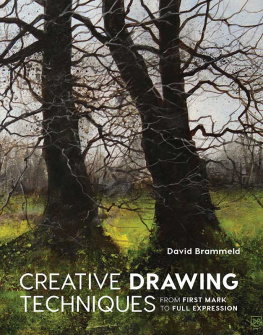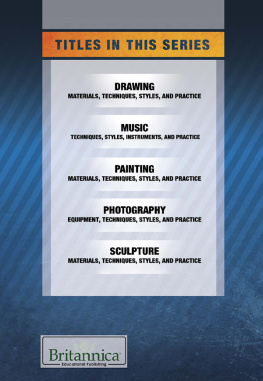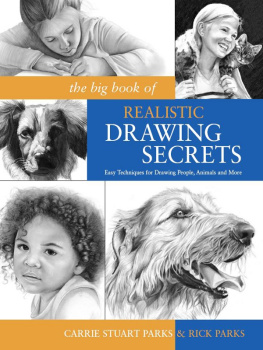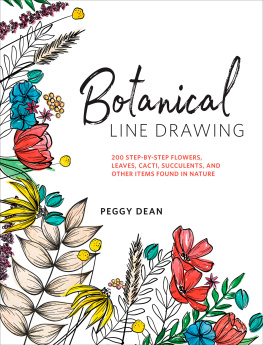
INTRODUCTION

Hello there! Welcome to Art Starts with a Line. I am so glad you picked up this book! Im Erin, a full-time illustrator. My brand, Paper Raven Co., is a line of stationery, greeting cards, home decor, and other fun illustrated things! My favorite things to draw are flowers and plants, decorative elements, and hand lettering. I also love symmetry, folk art, and clean lines! Illustration has been my job for more than five years, and Im so excited to join you on this journey.
Perhaps you really enjoy art and want to hone your illustration skills further, learn a new style, or strengthen your draftsmanship muscle. Or maybe youre considering drawing and illustration for the first time and want to learn some good foundational techniques. Either way, youre in the right place! This book works well for those familiar with everyday drawing, and it is also a great tool if youre just starting out.
Whether you enjoy art as a hobby or are considering it as a possible career path, there are so many resources and avenues available online to share, sell, and create illustration work. This is a thrilling time to be a creative person! Illustration is a rewarding discipline, and Im here to give you tools and techniques to help you build a solid skillset in line-based illustration. Drawing is simply the honing of hand-eye coordination, combined with a different way of viewing the world around you. Develop these two muscles, and you can draw anything. By the time you have finished this book, youll be familiar with how to draw a multitude of subjectslettering, plants and flowers, architecture, animals, and everyday objects. Lets get started!
LINE ART HAS SO MANY WONDERFUL APPLICATIONSITS PERFECT FOR EMBELLISHING YOUR LIFE PLANNER, BULLET JOURNAL, SCRAPBOOK, AND MORE. YOU CAN MAKE YOUR OWN STATIONERY OR DESIGN A LOGO FOR YOUR BLOGTHE POSSIBILITIES ARE ENDLESS!

HOW TO USE THIS BOOK

This book is divided into five main sections: Borders, Banners & Letters; Botanicals; Architecture & City Life; Animals & Insects; and Everyday Life. Each section is designed to teach you how to draw different types of objects within that theme. Most sections start with basic objects and become more advanced as you progress.
Youll also find step-by-step instructions on how to draw a variety of objects and give them unique features and personality by adding details. These instructions are meant to be used as a guideyou dont have to draw exactly what I draw, but you can if you like! And you can always follow the foundational principles in building the illustration and add your own personal twist in the details. I highly encourage you to doodle in this book, draw in the margins, make notes, and practice the different techniques in your own sketchbook. Practice really does make perfect!
Youll find practice pages where you can try your hand at what youve learned. Explore anything that fits the theme! Want to practice drawing the paws of animals? Go for it. Really want to draw a llama? Pull up a reference and try it! This is your free space.
Each section also includes a creative prompt to spark the imagination and encourage you to take what youve learned and get really creative.
By the time youve worked your way through this book, youll feel more confident about incorporating drawing into your everyday life and more self-assured about illustrating complex items and objectsand hopefully you will have had a lot of fun!
Are you ready to begin? Onward!

DRAWING TOOLS & MATERIALS

These are some of the drawing tools I use every day. Youll notice a variety of pens, pencils, and erasers. I feel that the greater the variety of utensils you have for mark-making, the better and more flexible your work will be! Of course, you dont need all of these tools to make great art. All you really need are a few trusty supplies.
1. Ballpoint Pen
I like to use a BIC ballpoint. This pen is great for loose sketching, doodling, and taking along for travel. It creates a light, single-weight line and can be used with different pressure to achieve some subtle shading effects.
2. TombowMONO Drawing Pen, Size 03
This is my favorite inking penI use it in almost all of my final illustrations. This is a felt-tip pen with a small nib. It delivers a single-weight line (hence the name, MONO) that is rich with ink and wont scrub up when you erase lines underneath. The MONO pens come in three sizes: 01 (very fine), 03 (fine), and 05 (medium).
3. Tombow Fudenosuke Calligraphy Pen, Soft Tip
I love this pen for lettering! For reference, the lettering section of this book was done almost exclusively with this calligraphy pen. This pen has a sturdy brush tip, but the bristles stay together for a bouncy tip that allows for great variation in line weight. Its also available with a hard tip.
4. PentelBrush Pen
This pen has a bristly, thick tip that is great for lettering and making inkier, sweeping marks. Every brushstroke has natural edges, creating a beautiful, organic feel.
5. Tombow Dual Brush Pen
This pen is perfect for both traveling and as a mainstay in your drawing kit. One side uncaps to reveal a flexible brush tip that allows for great line variation, while the other side uncaps a fine tip that is ideal for detailing and fixing little inconsistencies. I love this pen for its versatility.
6. 4H Pencil
In the next section, we will discuss basic drawing techniques and how to achieve them with different tools. This pencil is at the hard end of the HB graphite spectrum. It creates a very lightweight, precise line.
7. HB Pencil
This pencil is in the middle of the HB graphite spectrum; it has some give and thickness. Its great for shading!
8. 6B Pencil
This pencil is at the soft end of the HB graphite spectrum. Its very easy to use and provides a very dark mark with little pressure.











